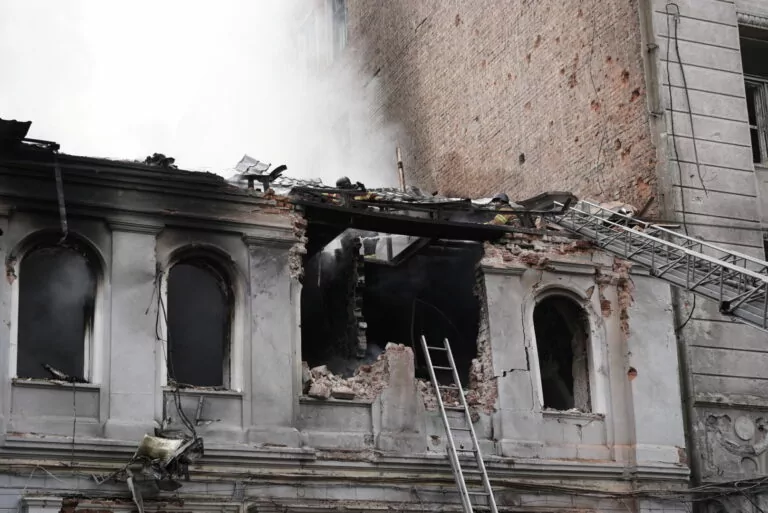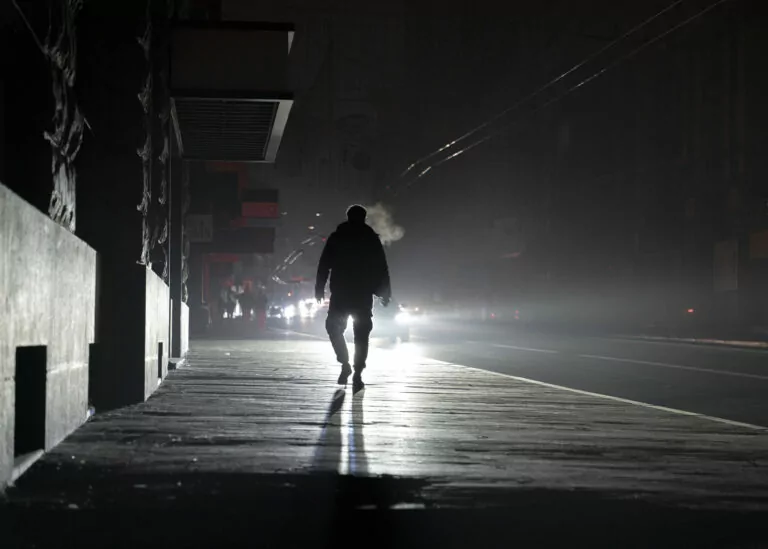Previously, Gwara Media fact-checkers had identified 9 Russian soldiers based on documents found in liberated Izium. We still continue deanonymizing the war criminals of the Russian army who participated in the Russian invasion of Ukraine.
In the first part of the investigation, we managed to detect that the First Motorized Rifle Regiment of the Taman Division and the 856th Guards Self-Propelled Artillery Regiment both took part in the war.
Later, we specified other military units involved in the occupation of the Kharkiv Oblast. This time, to identify Russian soldiers, we used obituaries from Vkontakte and Odnoklassniki, popular social networks in Russia. Consequently, we confirmed the participation of four more units in the armed aggression against Ukraine.
236th Artillery Brigade
The 236th Brigade (military unit 53195) is part of the 20th Guards Army stationed in Kolomna, Moscow Oblast. The list of its weaponry is the following:
• 2S19 Msta [a 152.4 mm self-propelled howitzer]
• 9k57 Hurricane [multiple launch rocket system]
• 9k114 Shturm [radio-guided anti-tank missile system]
• 1L219 Zoopark [a counter-battery radar system]
We found data on the two deceased soldiers of this brigade, which confirmed that this military unit did pay a visit to Izium.
One of the militaries, 21-year-old junior sergeant Nikita Bespalov, died near Izium on September 5, 2022.

On Bespalov’s VKontakte page, we can see that he, like most compatriots, was of a “decent” patriotic education.
At 16, Bespalov participated in military-patriotic events such as Vivat Russia. This forum is held annually and aims at “nurturing patriotism in children and teenagers, forming their active civic position by encouraging the participation in the most important historical events of the Motherland and preparing teenagers to service in the ranks of the Armed Forces of Russia.”

In the photo, the children are weaving Russian flags and dressed in military uniforms. It looks like a mandatory condition for participation.
The “entertainment” program at this patriotic forum is also worth attention. It includes such entertainment as “competition in quests Secrets of the Tula Kremlin and Unbreakable and Legendary, tactical obstacle course race, vocal and acting contests in a staged patriotic song competition,” as well as quizzes on the history of the Red Army.
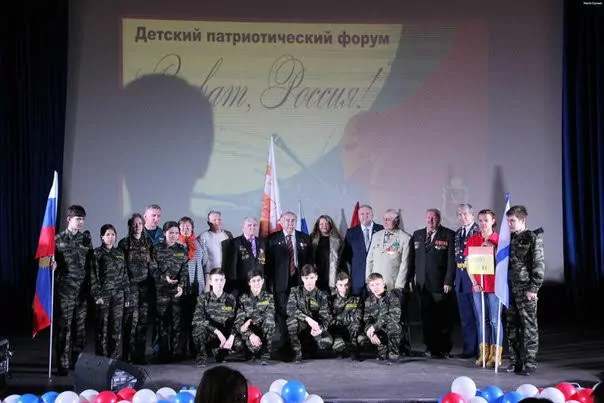
As you can see, the main guests of the event are military with numerous awards.
Let us also pay attention to the banner behind the children and guests of the forum. There are images of military personnel and military equipment. This one is present both in 2018 and 2019.
However, the picture depicts not only the technique of World War II as the forum is dedicated to the new “History of the Motherland.”
For example, the picture tank looks like a modern T-90 Tank called Vladimir – a Russian main combat tank. Russia has been using it in the war against Ukraine since 2014, as well as in the Civil War in Syria since 2017.
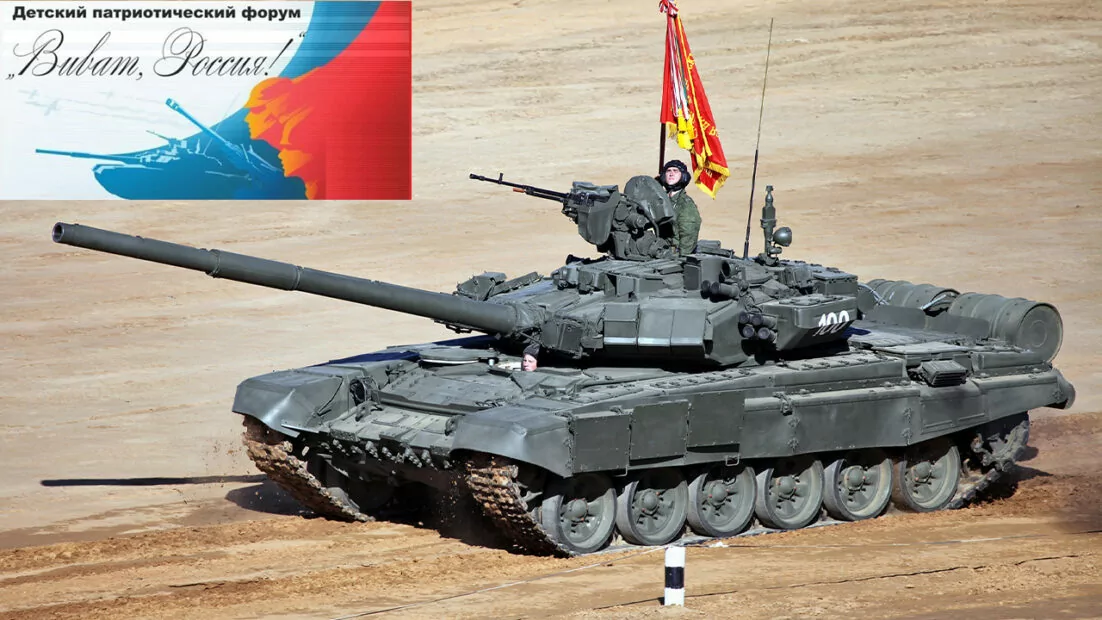
As we can see, the program of “pastime” for children remains almost unchanged over the years.
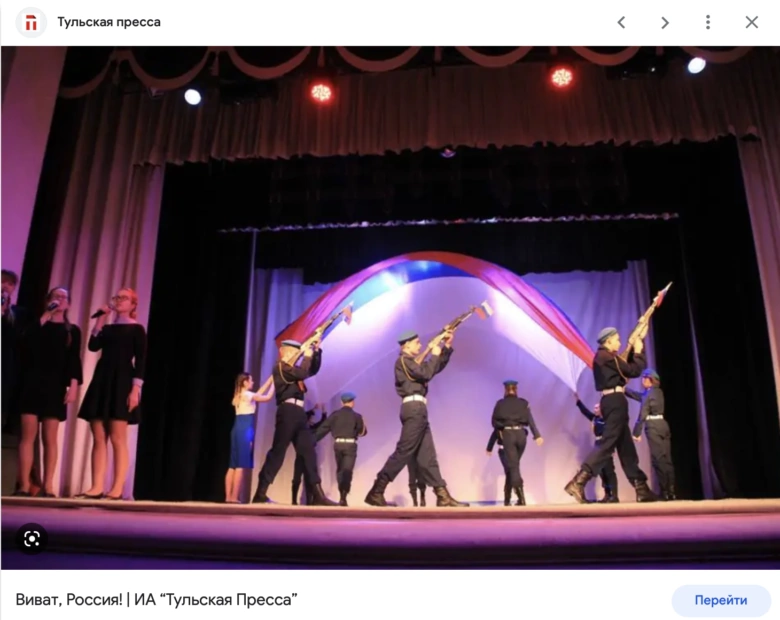
That is how, thanks to such forums, the Russian Federation propagates the distorted picture of the world to children. Events such as Vivat prepare citizens to serve in the army and percept Russia as a state whose key value is military power.
Anyway, let’s return to the portrait of Nikita Bespalov.
On his page, there is no trace of politics, war, or anything other than games and humor – a typical page for an average teenager.
After high school, Bespalov entered the Tula Agricultural College, named after I.S. Yefanova, aiming to become an auto mechanic.
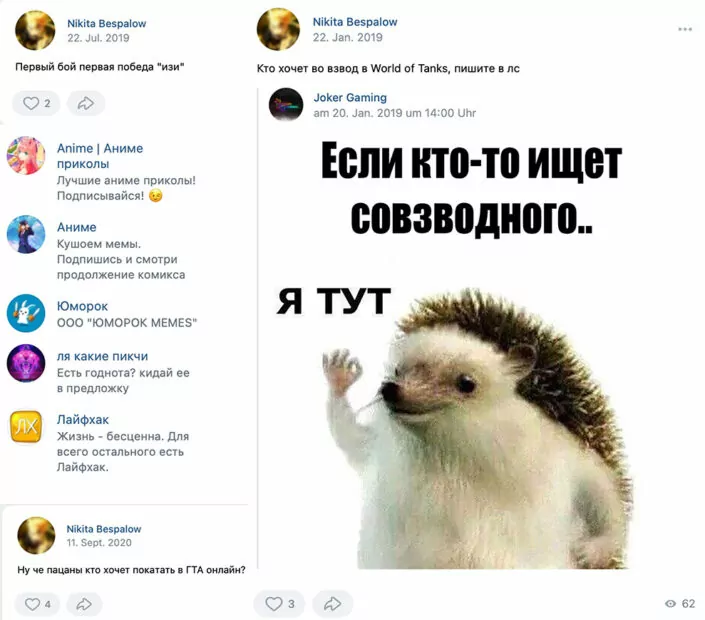
Along with posts about games and terrible homework, Bespalov shares plans to participate in the war. Judging by the post from June 2022, he was not going to the battlefield against Ukraine for the first time.
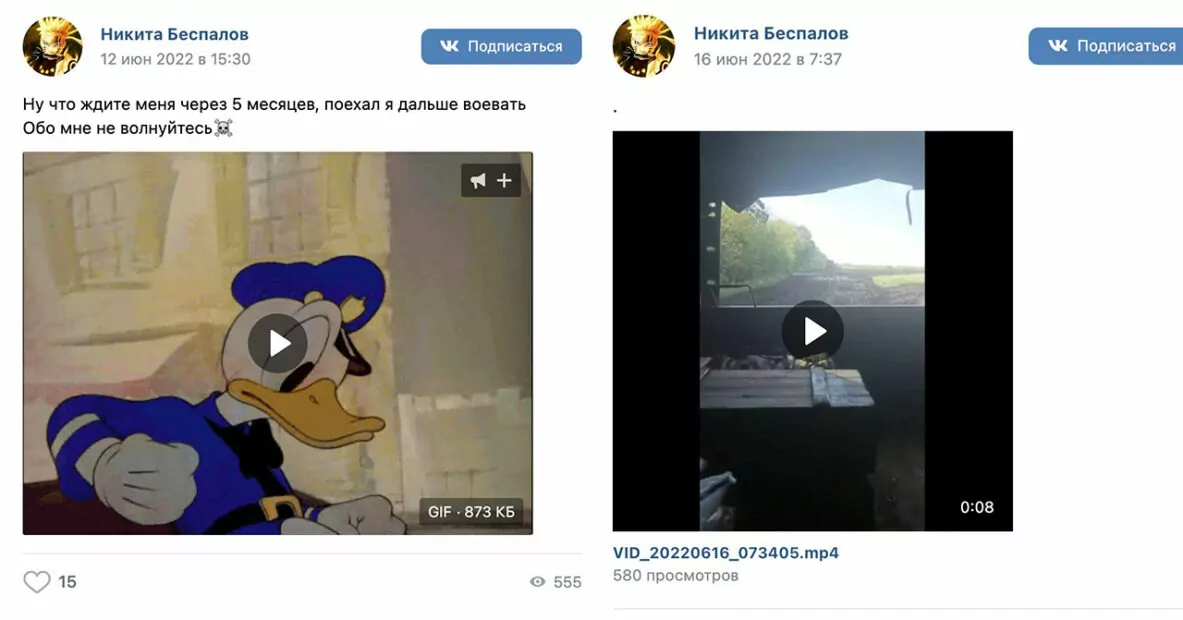
The motto in the Bespalov profile suggests that his motivation for participating in the war could be the desire to help or avenge a friend.

It seems Uzumaki Naruto’s quote proved prophetic for Bespalov.
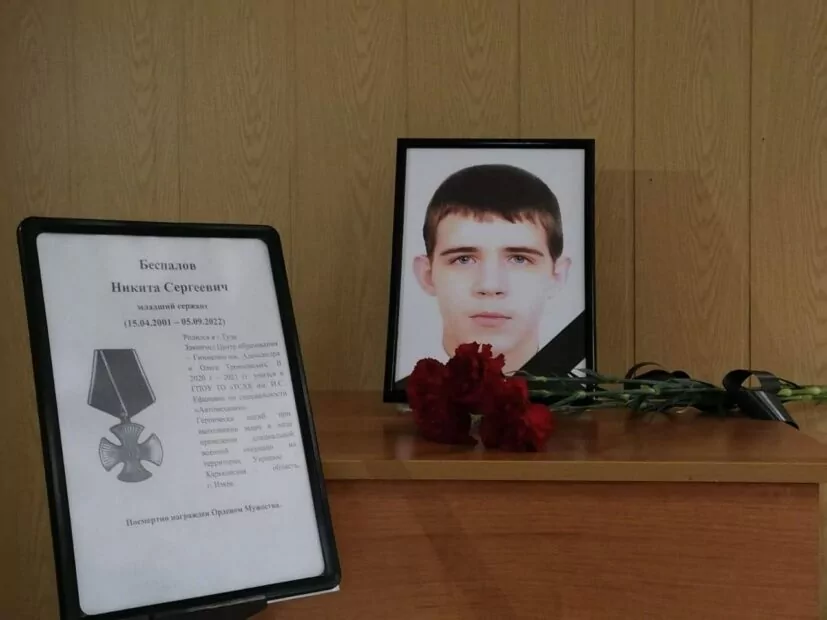
Another person from the same was Sergeant Alexander Yevtushenko. He also served in the 236th but died on September 26.
UPD 19.12.2022: The date of Yevtushenko’s death coincides with the de-occupation of the Kharkiv Oblast. Another argument is that the General Staff of the Armed Forces of Ukraine confirmed the 236th brigade to have invaded Kharkiv Oblast. Therefore, the Gwara team assumes Yevtushenko died there. We also found a mention of his death on his wife’s page. However, as of now, fact-checkers cannot certainly say if Yevtushenko died in Kharkiv Oblast.
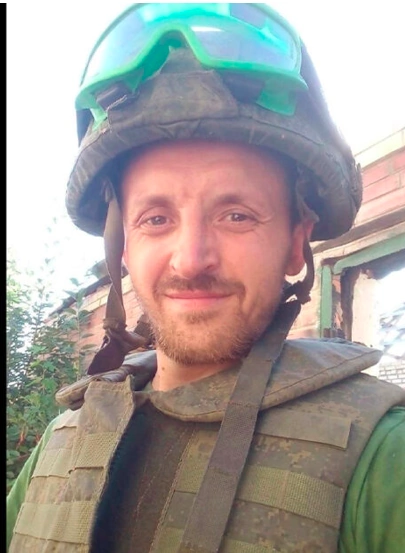
In the military’s social networks, we can see a bachelor’s degree from the Academy of Law and Management of the Federal Executive Service issued in 2020. The soldier was 33 years old when he got higher education. We may assume that the motivation for getting a degree was most likely the desire to advance up the career ladder.

Yevtushenko’s obituary states that he had been in Ukraine since February 2022, that is, since the beginning of the full-scale military aggression of the Russian Federation.
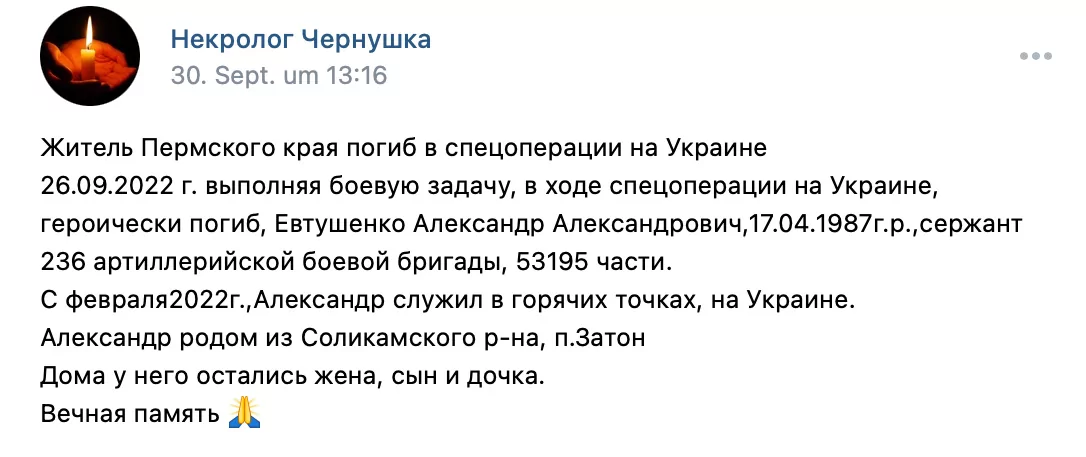
On the profiles of Yevtushenko’s family (deleted to date), we can see footage of his pre-war life shared by his wife.

Before the start of the full-scale war with Ukraine, Yevtushenko’s VKontakte profile showed no clear political position. Apparently, he “made up his mind” in February. After all, next to the photo of the daughter against the background of the Russian flag, probably taken at the school of the Olympic reserve, we can read Yevtushenko’s complaints about the difficult economic situation and the unjust actions of the authorities towards Russian citizens.
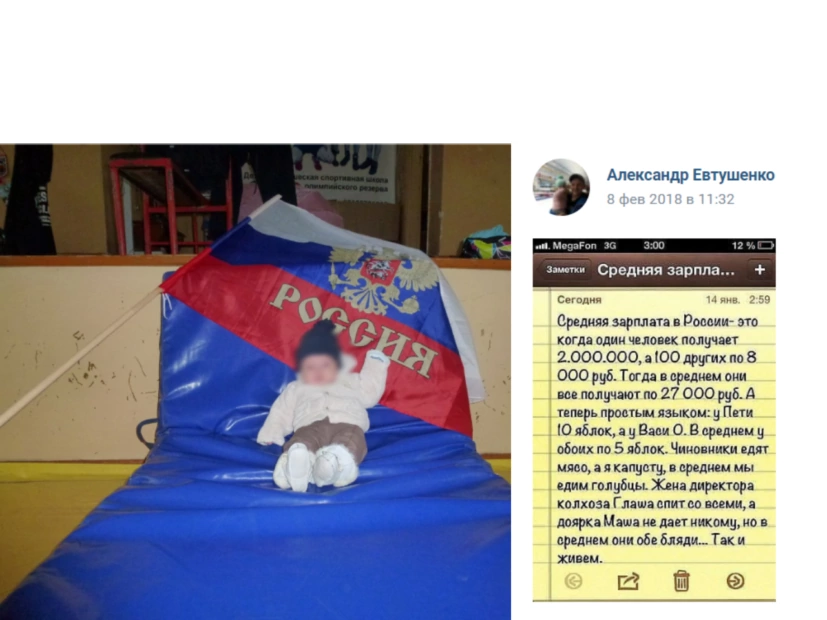
Thanks to the Bespalov’s and Yevtushenko’s profiles, we managed to document the presence of the 236th artillery brigade and the use of its weapons in the Izium region.
On May 6, on his Facebook page, Maksym Strelnikov, the head of the Izium City Council, warned that the Russian military use Uragan salvo systems.
“Russian propagandists began to mass-report cases of the Izium civilian population being shelled with cluster shells. They accuse the Armed Forces of Ukraine of using these prohibited weapons while simultaneously pointing out there are no reasons for such strikes. Unfortunately, these are Russians who hit private houses with 9k57 Uragan, which carry cluster shells. The Russian occupiers constantly use these weapons to attack civilian infrastructure in Ukraine”, wrote the head of the Izium City Council.
In his video message, Strelnikov proves that the Uragan is used by the Russian military by analyzing the distance to the deployment of the Ukrainian army, as well as the technical characteristics of the multiple rocket launcher.
Apart from the Uragans, another type of weapon was used in the Kharkiv Oblast. This one is also in service with the 236th brigade – radar station 1L261 from the counter-battery complex Zoopark.
In September, such a Zoopark appeared in the list of trophies of the Armed Forces of Ukraine.
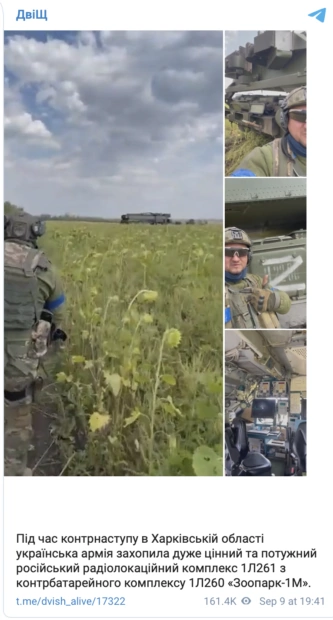
“This complex is designed to detect the firing (launching) positions of mortars, artillery, and anti-aircraft guns of the enemy and to provide firing (launching) of similar projectiles”, reports Defense Express.
The fact that the Russians are using the Zooparks in the war against Ukraine is beyond doubt. Below you can see the evidence dating from March 2022.
236th Artillery Brigade in Kharkiv Oblast used another type of weapon, called 2S19 Msta, a 152 mm self-propelled artillery installation, which was “trophied” by the Ukrainian soldiers of the 25th separate airborne Sicheslav brigade on September 12.
These trophies alone do not confirm 100% of the weapon use; however, having analyzed other data, we can state a very high probability.
49th anti-aircraft missile brigade
The 49th anti-aircraft missile brigade is a tactical air defense unit of the Russian Land Forces (military unit 21555). It is part of the First Tank Guards Army. The brigade specializes in anti-aircraft defense.
It is located in Smolensk, 800 kilometers from Izium. According to open data, it used to have in its arsenal:
- 2K11 Krug
- Krug-M2
- Buk
- Buk-M1-2
Among others, we managed to identify Colonel Ivan Grishin, who died near Izium on April 16. Thanks to his detailed obituary, we confirmed the participation of the 49th brigade in the occupation of Izium.
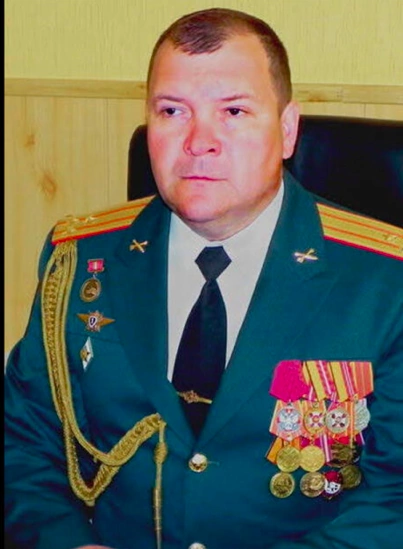
Grishin is not a random citizen but a professional military man who took part in the military operations of the Russian Federation in Syria.
Grishin received military education in 1991 by graduating from the Military Air Defense Academy named after A.M. Vasilevskyi. He shared photos with colleagues on his page.
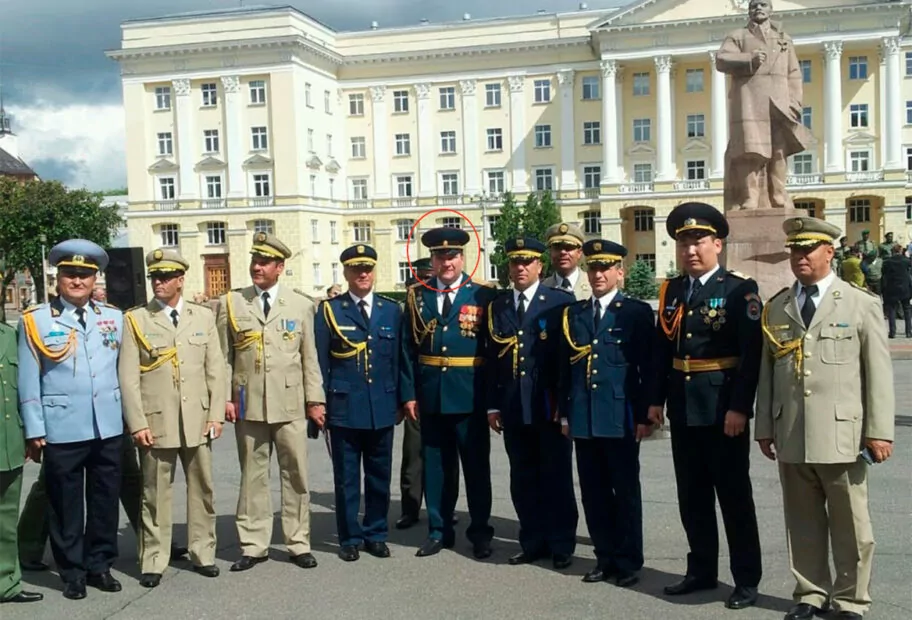
It is worth noting that his lifestyle and material status were quite different from the life of ordinary privates and corporals we identified earlier.
Thus, on the social networks of his family, you can find photos taken during various vacations. In addition to traveling abroad, the family visited the occupied Crimea.
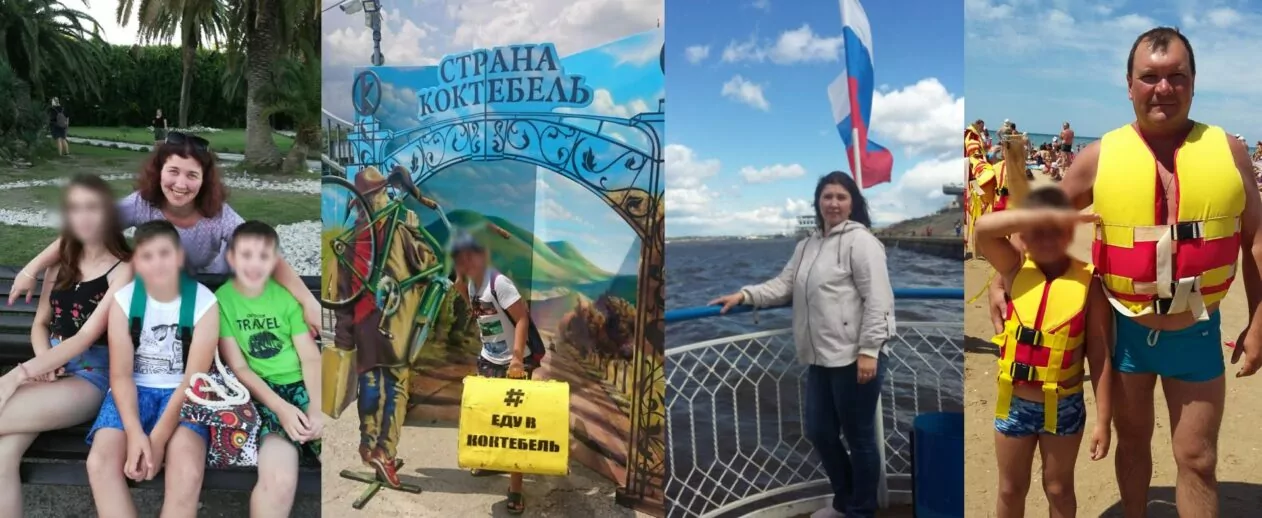
The story goes like that: in 2010, Grishin’s 18-year-old son also took the oath at the same military educational institution as his father, judging from the chevrons on the photo of Aleksei Grishin.
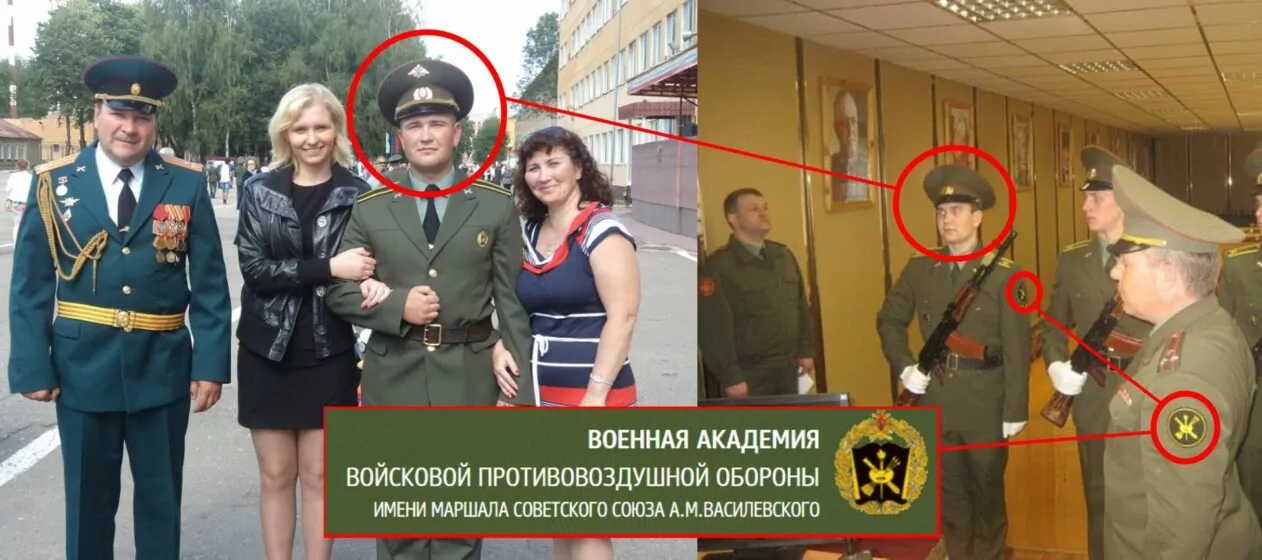
In 2018, Aleksei shared a photo of him in military uniform. He must have followed his father’s example and became military personnel.
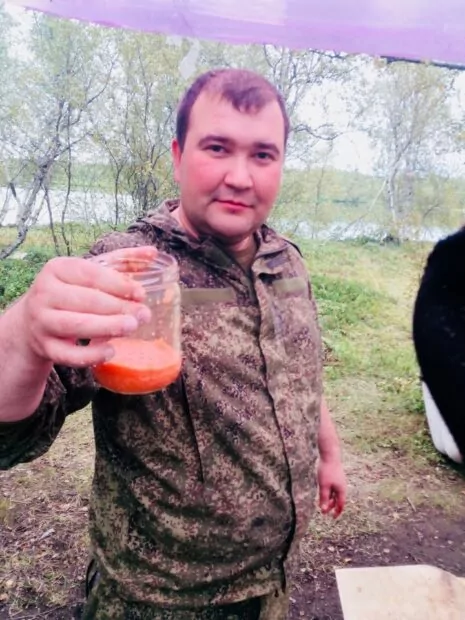
Whether Grishin’s son took part in Russia’s invasion of Ukraine is unknown. Perhaps the father helped the offspring to work in the rear.
Unlike his father, Aleksei is alive: he recently logged in to his VKontakte profile. However, due to the lack of professional personnel in the Russian army, there are chances that very soon Aleksei will also face Ukrainian resistance.
As for the armament of the 49th brigade, there are recorded cases of destruction of the Russian Buk in Kharkiv Oblast. On May 4, activist Roman Donik reported about this on his Facebook page.
“Yesterday, I wasn’t sure, so I didn’t write anything. But today, good news: we’ve just got a confirmation! Our army destroyed the Buk-M2 in the Sloboda air defense missile strip,” he said.
6th separate tank brigade
The full name of the brigade is the 6th separate tank Chenstochovska Red Banner of the Kutuzov Brigade (military unit 54069). It is a unit of tank troops of the Russian Armed Forces, which was part of the First Guards Tank Army of the Western Military District of the Russian Federation. In January 2022, the unit was disbanded, and the 47th tank division was created instead.
This brigade has been participating in the war against Ukraine since 2014.
The Main Directorate of Intelligence has confirmed the involvement of the 6th tank brigade in the invasion of Ukraine. But we managed to specify that this tank unit was active in the Kharkiv Oblast by identifying its two soldiers who died near Izium.
One of them is an ordinary private, Nikolai Lenkovskyi, who died on March 25, 2022.
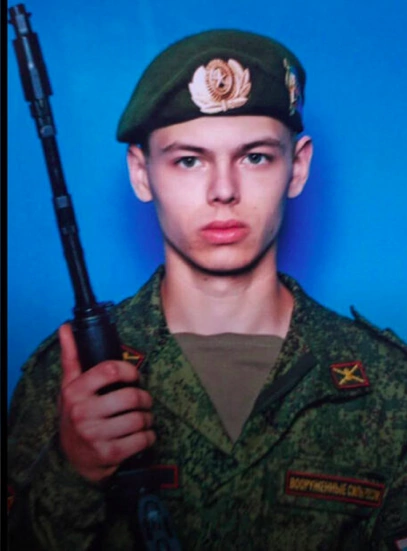
On his personal profile on VKontakte, Lenkovskyi reported that on July 2, 2021, he was going “to be drafted.” In the same year, he graduated from the Arzamas Technical School of Construction and Entrepreneurship and acquired the auto mechanic specialization.
According to information from the teachers, Lenkovskyi was raised by his father and grandmother. After his military service, he signed a contract with the Armed Forces of the Russian Federation to support his family.
We can make a conclusion about the level of education of Russian soldiers by looking at Lenkovskyi’s posts: unfortunately, he tends to make major grammar mistakes. Here, for instance, he highlights the skills of a tattoo master by saying “she did it quite carefullingly.”
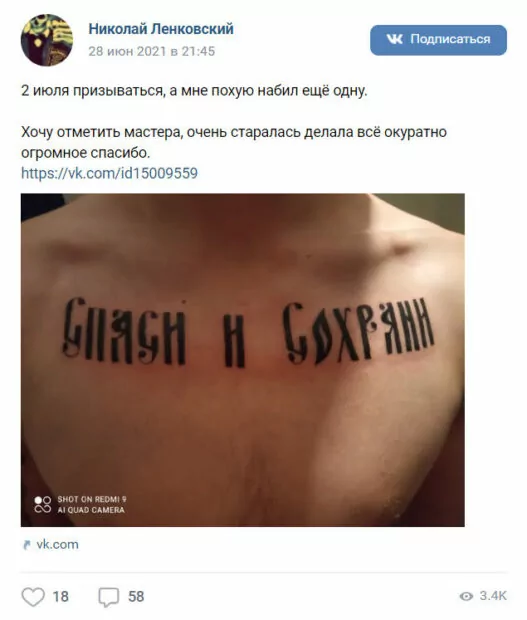
With a low level of education and a narrow window of opportunity, such boys go to technical schools and almost immediately get drafted into the ranks of the Russian army.
The next identified is Danil Mikhailov, who died on September 10 near Izium.
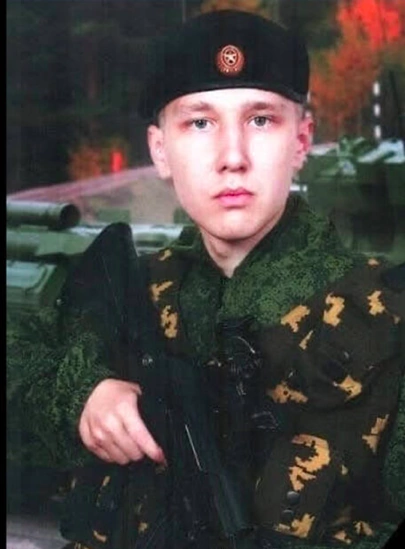
Mikhailov graduated from the Nizhny Novgorod Auto Mechanics Technical School. As Mikhailov’s friends report on social networks, Danil’s tank was hit, so the soldier died in the hospital.
His institution reports that the soldier “died while performing his military duty in Donbas” but nobody explains how Donbas relates to Kharkiv Oblast [these are two different regions in Ukraine – tr. note].

Danil Mikhailov signed a contract with the Russian army on March 3, 2021, the same as Lenkovsky. We assumed they might know each other, and yes: they were friends on social networks. The lads served in one tank unit, which in the Russian army consists of up to four tanks.
Mikhailov took part in the full-scale Russian invasion of Ukraine in July 2022. However, he died two months later, before reaching 21.
These privates are a vivid example of the Russian regime’s attitude towards its citizens: they are treated like cannon fodder. Not properly educated nor financially secure, these lads gave their lives for the aggressive ambitions of the Russian state.
National Guard of the Russian Federation
This unit is known to have committed atrocities in the Kyiv Oblast. However, after the de-occupation of the Kharkiv Oblast, the National Police reported that the Rosgvardiya was also involved in controlling the occupied cities. We managed to confirm this fact.
Andrei Filonov, identified as a military officer of the National Guard of the Russian Federation, helped with this.
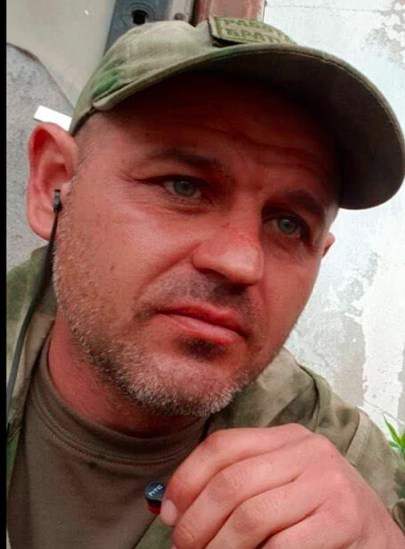
On September 9, he died of injuries in Balaklia.
Filonov was a professional soldier who devoted 22 years to military affairs. He took part in military operations in the North Caucasus.
Although Filonov served in the reconnaissance company, he understood the specifics of the job in an interesting way: on his social network profile (currently deleted), without hiding, the sergeant freely distributed photos demonstrating his participation in the invasion of Ukraine.
One photo shows the Russian symbol on the equipment, the letter “Z,” used by the Russian Federation during the full-scale invasion.
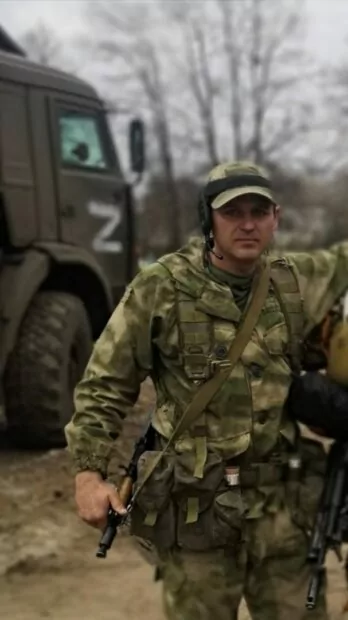
Let us share the story of his death. Judging by the version of the expert and — as he calls himself — reserve officer Oleg Marzoev, Filonov’s death is a ready-made script for Hollywood:
“Soldiers from the National Guard engaged in an unequal battle with the enemy and found themselves encircled, coming under heavy crossfire. Having assessed the situation, Junior Sergeant Andrei Filonov, showing courage and heroism, decided to advance on the “Ural” truck to the front line, using his equipment to shield his comrades from deadly lead, thereby saving the lives of servicemen. The unit managed to regroup and defeat the enemy. Leaving, the militants fired at the “Ural” from anti-tank grenade launchers. Andrei got multiple shrapnel wounds… He was evacuated to the hospital, where doctors fought for his life but could not save him.”
Of course, nowhere is it mentioned that the “enemies” are Ukrainians defending themselves from the occupiers on their land.
Given that the Ukrainian military liberated Balaklia on September 8th and Filonov died on the 9th, the story of his “heroism” that allowed the unit to regroup and inflict defeat seems even less realistic.
Let us also cite Oleg Marzoev’s comment regarding the incident.
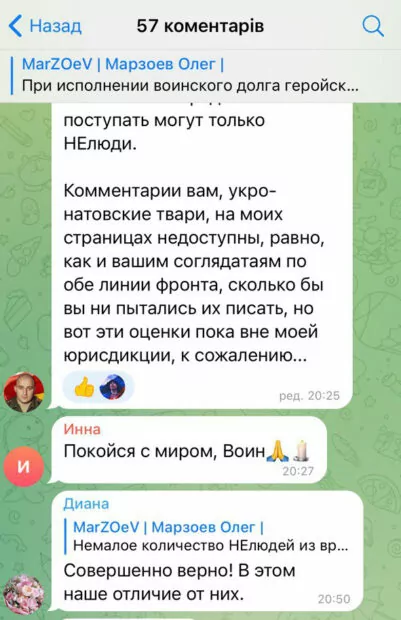
Conclusions
The southern part of Kharkiv Oblast was an essential bridgehead for Russian troops. Thanks to obituaries circulating on the Internet, we managed to confirm the participation of four more units of the Russian army.
Although the motivation of the military leadership is clear, the personal motives of the occupiers differ.
Therefore, we can observe how powerfully the Russian propaganda machine works. As early as at school, a citizen of the Russian Federation is instilled with ideas that have little to do with reality. Given the limited employment opportunities in remote areas, the low level of education, and the poor economic situation, a contract with the Armed Forces of the Russian Federation is often the only chance to earn money.
Nevertheless, it is not only the responsibility of the Russian leadership but also of individuals choosing to take up arms. For those returning home, a military tribunal is still the most likely development.
Text by Yuliana Topol’nik
Translated by Julia Kulish

